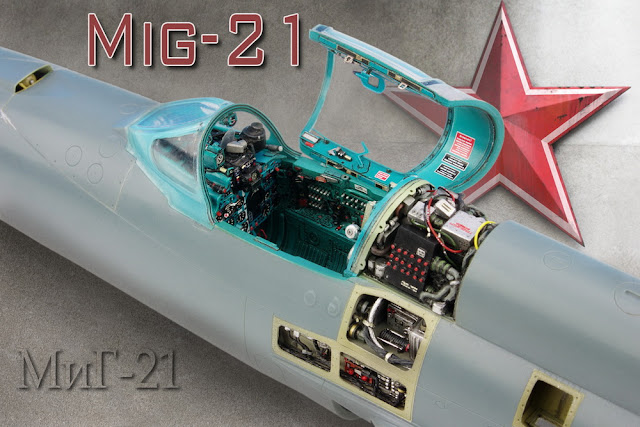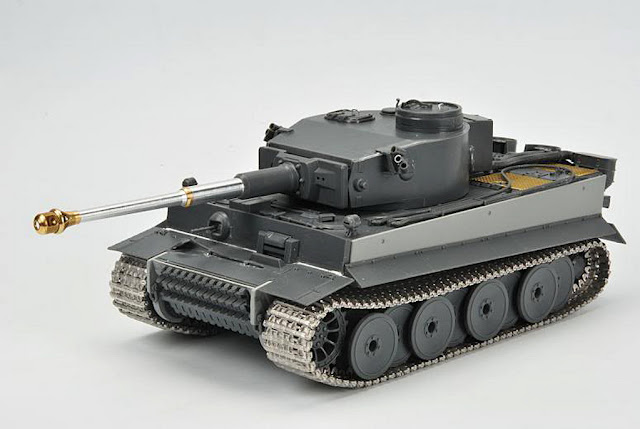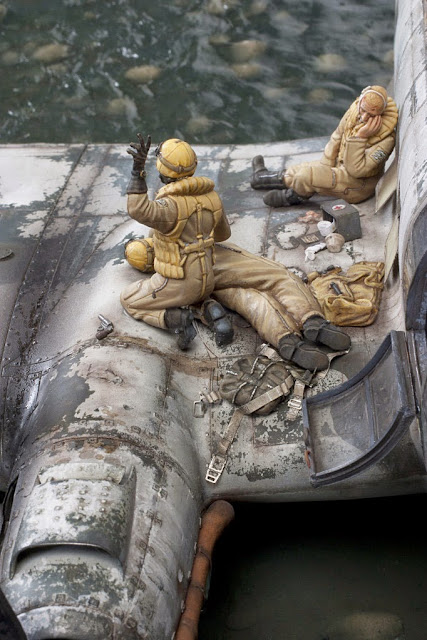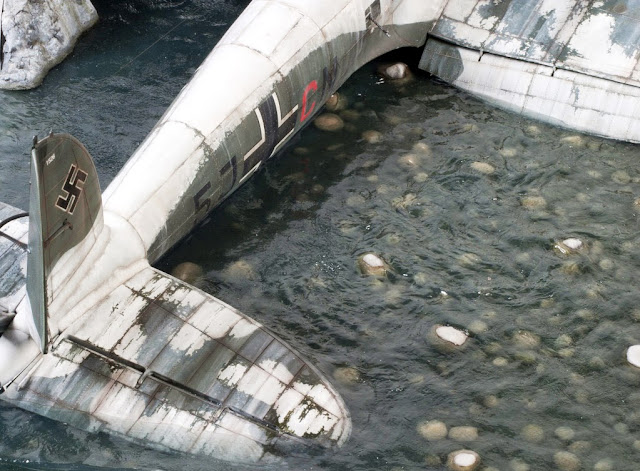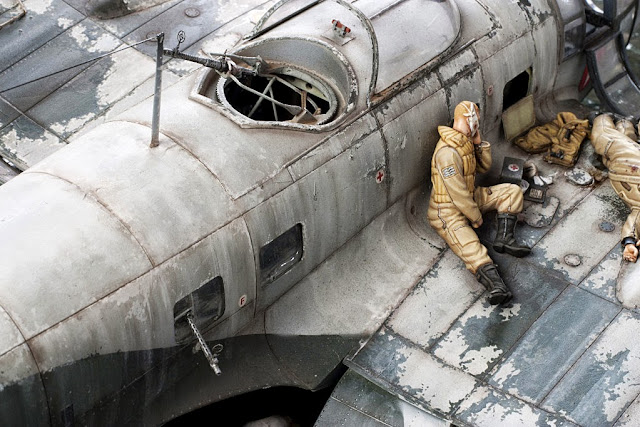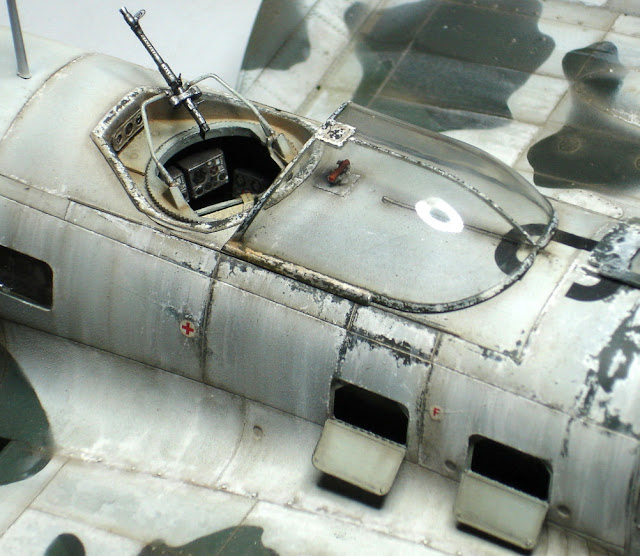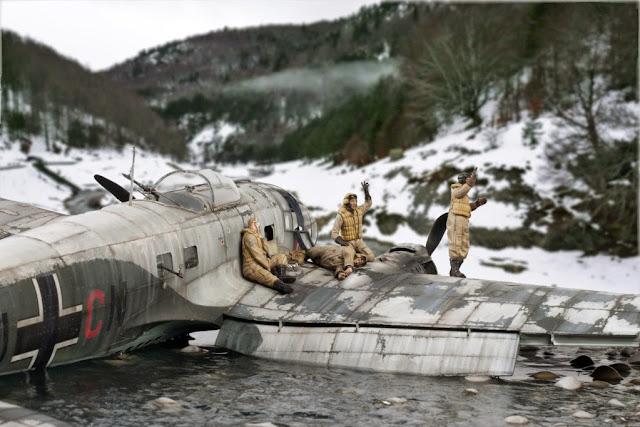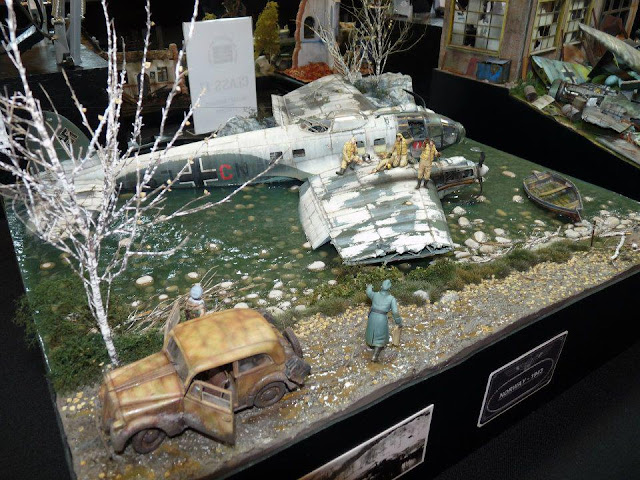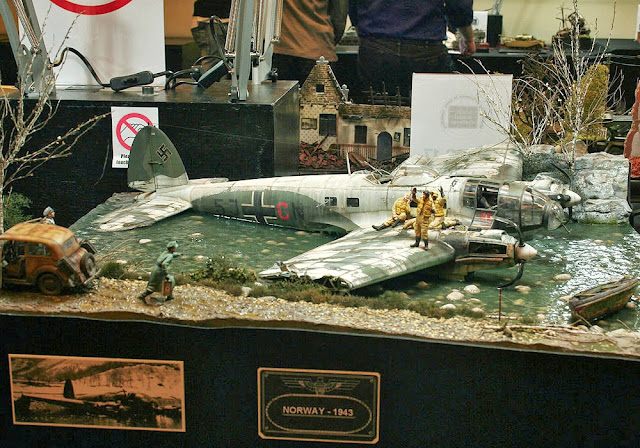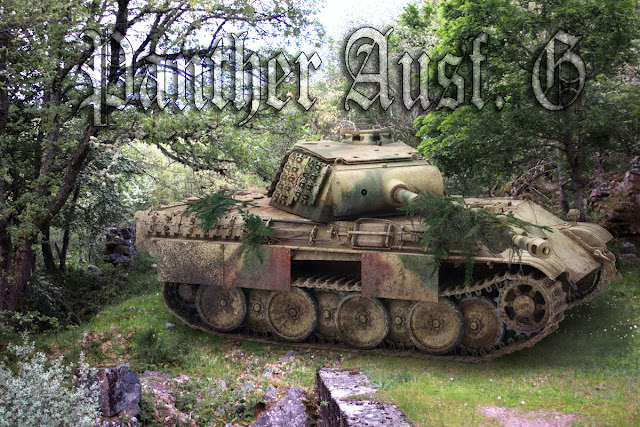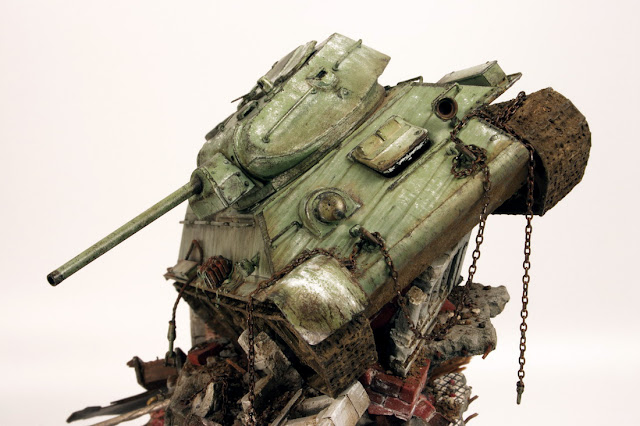This is the latest fighter that has sneaked into my workbench, Eduard´s 1/48 Mig-21 MF. This aircraft represents the essence of the Cold War Soviet air strategy. A mass production war machine designed to clutter up those ever watching airfields behind the menacing Iron Curtain.
I have chosen a bare metal scheme which best represents my vision of this machine. From the factory right to the battlefield, just enough time to paint the red stars (and plenty of lettering).
The background of the photos is a beautiful digital artwork by Gino Marcomini on Oxygino.com
The Eduard kit is really nice, though I would like a little bigger riveting. Maybe Eduard and Trumpeter should agree a midway position. :)
I started with the detailing of the tail panels. Styrene pieces, electrical wire, adhesive tape, stretched sprue...you know, the usual stuff:
After the painting I attached the remaining elements and wires. The small decals to imitate signs -and some elements too small to be painted- look really nice (in my humble opinion...). Don´t be shy, click the pic to enlarge:
And that´s all for now. The next step is the detailing of the avionic bays beside the cockpit. Next week.
Q
I have chosen a bare metal scheme which best represents my vision of this machine. From the factory right to the battlefield, just enough time to paint the red stars (and plenty of lettering).
The background of the photos is a beautiful digital artwork by Gino Marcomini on Oxygino.com
The Eduard kit is really nice, though I would like a little bigger riveting. Maybe Eduard and Trumpeter should agree a midway position. :)
I started with the detailing of the tail panels. Styrene pieces, electrical wire, adhesive tape, stretched sprue...you know, the usual stuff:
After the painting I attached the remaining elements and wires. The small decals to imitate signs -and some elements too small to be painted- look really nice (in my humble opinion...). Don´t be shy, click the pic to enlarge:
And that´s all for now. The next step is the detailing of the avionic bays beside the cockpit. Next week.
Q



















































